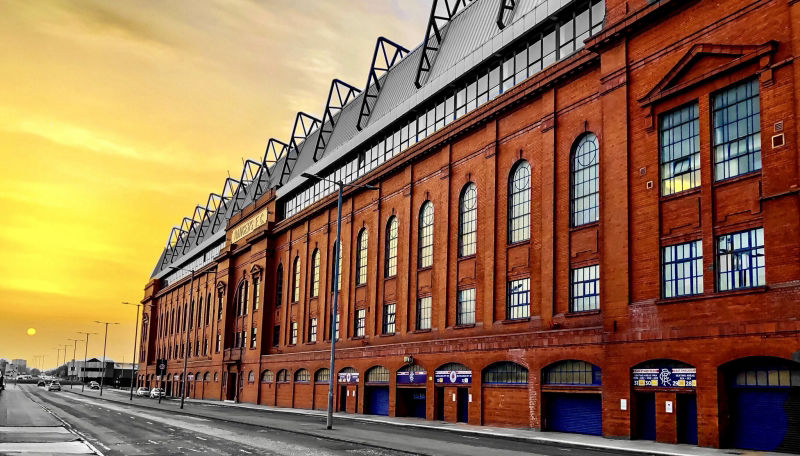

Rangers' used a variety of grounds in Glasgow as a venue for home matches in the years between 1872 and 1899. The first was Flesher's Haugh, situated on Glasgow Green, followed by Burnbank in the Kelvinbridge area of the city, and then Kinning Park for ten years from the mid-1870s to the mid-1880s. From February of the 1886–87 season, Cathkin Park was used until the first Ibrox Park, in the Ibrox area of south-west Glasgow, was inaugurated for the following season. Ibrox Stadium in its current incarnation was originally designed by the architect Archibald Leitch, a Rangers fan who also played a part in the design of, among others, Old Trafford in Manchester and Highbury in London. The stadium was inaugurated on 30 December 1899, and Rangers defeated Hearts 3–1 in the first match held there.
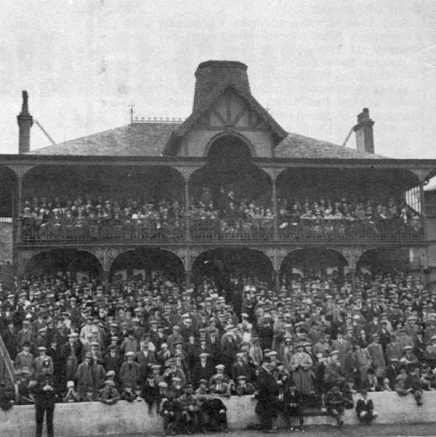
Ibrox Park, as it was known between 1899 and 1997, is a lot different from the Ibrox Stadium of today. It followed the model of most Scottish stadiums of the time, comprising an oval track around the pitch, with a pavilion and one stand along one side. The ground had a capacity of 40,000. Celtic Park, Ibrox and Hampden Park all competed with each other to host Scottish Cup Finals and Scotland matches, one of which could generate up to £1,000 in revenue for the host club.
The next redevelopment occurred in 1928, after Rangers had won their first double. A new Main Stand, to the south side of the ground, was opened on 1 January 1929. The Main Stand, which has the familiar Leitch style criss-cross balcony and a red-brick facade, seated 10,000 people and provided standing accommodation in an enclosure.
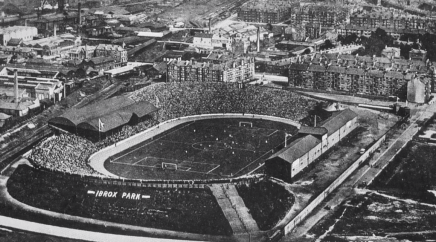
Simon Inglis, a writer on football stadia, commented in 2005 that the Main Stand is Leitch's "greatest work" and is "still resplendent today in its red brick glory under a modern mantle of glass and steel". The architectural significance of the Main Stand was reflected when it became a Category B listed building in 1987. Original seats in the Main Stand were made of cast iron and oak. One was auctioned in 2011 for £1,080. The banking of the terracing continued to increase in the 1930s. On 2 January 1939, the Old Firm game against Celtic attracted a crowd of 118,567, the record attendance for any league match played in Britain. At this point, Ibrox was the second-largest stadium in Britain.
Floodlights were first used at Ibrox in December 1953, for a friendly match against Arsenal. The first floodlit Scottish league match was played at Ibrox, in March 1956. Covers were built over the north and east terracing during the 1960s. No structural changes were made to Ibrox, but capacity was cut to approximately 80,000 by safety legislation.
Ibrox Park had the worst fan safety record in Britain before its complete redesign and renaming in 1997. Two fans died in September 1961 when a barrier collapsed on Stairway 13, resulting in a crush. Stairway 13 was a popular, often overcrowded, and very steep exit from the East Terracing due to its proximity to Copland Road subway station and parking areas for the Rangers supporters' coaches. After this incident, Rangers installed safety measures, but further injuries were sustained in crushes on Stairway 13 in both 1967 and 1969. On 23 October 1968, the main stand at Ibrox was hit by fire. Just seven months later there was another fire, which destroyed more than 200 seats behind the directors box. The worst disaster to date to affect football in Britain happened after the Old Firm game on 2 January 1971, when 66 people died of asphyxiation due to another crush on Stairway 13. The game itself ended in a 1–1 draw, with Colin Stein scoring a late equalising goal for Rangers. This led to a widespread belief that the crush had been caused by fans who had left the game early, but had turned back when they heard the roar that greeted the Rangers goal. A public inquiry discounted this initial story. It established that the crowd had been travelling in the same direction when the crush happened, with it perhaps being precipitated by some bending over to pick up items that had been discarded during the goal celebrations. The downward force of the crowd leaving the stadium meant that when people started to fall there was no means of preventing a crush.
The inquiry and subsequent compensation cases found that Rangers had been inept in their administration and complacent after the incidents in the 1960s. The disaster also highlighted, however, the fact that there were no established safety standards that should be adhered to, let alone any means of enforcing such standards. This had been first recommended nearly 50 years earlier, after the 1923 FA Cup Final. The Guide to Safety at Sports Grounds was published in 1973, and legislation was enacted with the Safety of Sports Grounds Act 1975. This law cut the capacity of Ibrox to 65,000. In the short term, Rangers took the stopgap measure of installing benches in the North Stand, which was renamed the Centenary Stand.
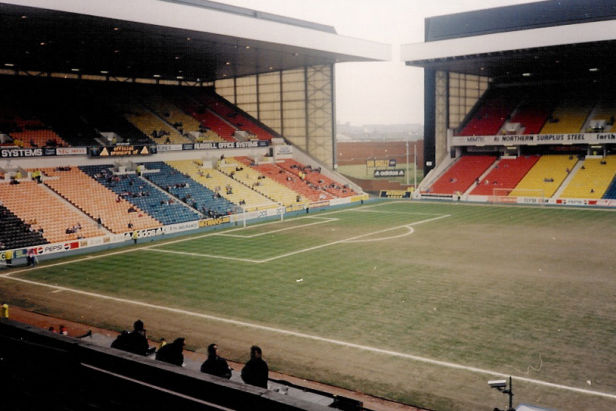
The 1971 Ibrox disaster led to the club developing a modern, safe stadium. Willie Waddell visited modern grounds in West Germany during the 1974 World Cup and believed that steep terracing and exits, such as Stairway 13, had to be replaced. The cut in capacity and boardroom changes led to radical plans by architects Miller Partnership, which were published in November 1977. The plans were modelled on the Westfalen Stadium, home ground of Borussia Dortmund.
This all changed when a new regime, chaired by David Holmes, took control of Rangers in 1986. Graeme Souness was appointed player–manager, while several English stars, including Terry Butcher and Chris Woods, were signed. Season ticket sales rose from 7,000 in 1986 to over 30,000 in the 1990s, while commercial income increased from £239,000 in 1986 to over £2 million in 1989.
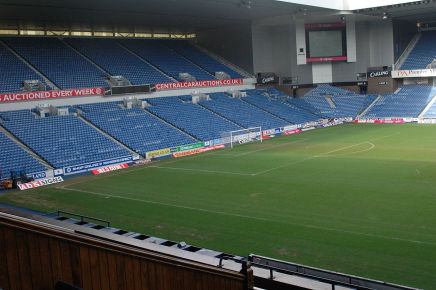
The introduction of computerised ticketing, zonal public address systems and closed-circuit television for monitoring turnstile areas meant that Ibrox was at the forefront of stadium management. Rangers also adopted the American technique of analysing the types of fans in each area of the stadium and adjusted their food stalls accordingly. Greater success on the pitch meant that Ibrox demonstrated that seated stadiums would be welcomed by most fans, if designed and fitted well.
David Murray acquired control of Rangers in November 1988. Argyle House, a £4 million extension behind the Govan Stand, was opened in 1990. This added executive boxes, office space and hospitality suites. A further series of developments was started in the early 1990s to increase capacity to over 50,000. Murray commissioned architect Gareth Hutchison to find a way of adding a third tier to the Main Stand. This was a highly complex process, as the Main Stand facade had become a listed building and Murray wanted the existing structure to remain open during construction. Τhe contractors removed the original roof and added a temporary cover while the work carried on above. The Club Deck, which cost approximately £20 million, was opened with a league match against Dundee United in December 1991. The redevelopment of the Main Stand was partially financed by a Football Trust grant of £2 million and a debenture issue that raised £8.5 million. Ordinary fans bought debentures for between £1,000 and £1,650 each, which guaranteed the right to buy season tickets for at least 30 years, along with some other minor benefits.
Four columns were built through the existing Main Stand to support the Club Deck, which resulted in approximately 1,000 seats having a restricted view. After opening the Club Deck, Ibrox had a capacity of 44,500. When a new playing surface was installed in 1992, Rangers were able to add a further 1,300 seats to the front of three stands by lowering the pitch slightly. The only standing area of the ground, the enclosure of the Main Stand, was seated in 1994 to comply with the Taylor Report and UEFA regulations. The multi-coloured seats were replaced in 1995 with uniform blue seats. A further 1,200 seats were added in this process by reconfiguring passageways, giving a total capacity of 47,998. The two spaces between the Govan, Copland and Broomloan Stands were filled in with seats and Jumbotron screens. The ground was officially renamed Ibrox Stadium after renovations were completed in 1997, when Ibrox had a capacity of just over 50,000.
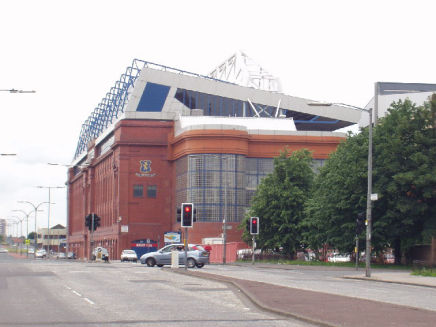
Three rows of seating were added to the front of the Govan Stand upper tier in 2006, linked to a new 'Bar 72' area, increasing the capacity to its present figure of 50,817. The Main Stand was renamed the Bill Struth Main Stand in September 2006, to commemorate the 50th anniversary of his death. The Jumbotron screens were replaced in 2011 with modern LED screens.
Rangers became insolvent in February 2012 and was unable to reach a company voluntary arrangement with its creditors, principally HM Revenue and Customs. Ibrox Stadium, along with the business and other assets of Rangers, was sold in June 2012 to a new company run by Charles Green. On 9 April 2013 it was announced that the Jumbotron screens were to be replaced; the previous screens were inferior and had become pixelated. On 16 July 2014 the club paid a lasting tribute to Sandy Jardine by renaming the Govan Stand in his honour. In 2016, the club added large banners to the stadium exterior (covering the separate Edmiston House office building, then the Copland Stand/Sandy Jardine Stand corner) depicting images of past players, entitled 'Icons Of Ibrox'.
The main railway stations in Glasgow, Central and Queen Street, are both approximately two miles from Ibrox. The Ibrox and Cessnock stations on the Glasgow Subway both serve Ibrox. It is also served by First Glasgow buses on Paisley Road West. Ibrox sits near to the M8 motorway, with junction 23 being the closest exit, but the roads around Ibrox become congested on matchdays. There was an Ibrox railway station, on the main line linking Glasgow and Paisley, which was closed in 1967 under the Beeching Plan.
The Ibrox pitch is surrounded by four covered all-seater stands, officially known as the Bill Struth Main (south), Broomloan Road (west), Sandy Jardine (north) and Copland Road (east) Stands. Each stand has two tiers, with the exception of the Bill Struth Main Stand, which has had three tiers since the Club Deck was added in 1991. The two corner areas, known as the West and East areas of the Sandy Jardine Stand, have one tier of seating below a JumboTron screen.
The Bill Struth Main Stand, formerly known as the Main Stand, faces onto Edmiston Drive (A8 road). The red-brick facade, designed by Archibald Leitch, is a Category B listed building. Simon Inglis, writing in 1996, described it as an "imposing red-brick facade, with its mock neo-classical arched, square and pedimented windows, exudes prestige and power." On each end wall the club crest is depicted in a blue and gold mosaic. Stairtowers leading to the Club Deck (third tier) stand at each end of the Main Stand. These towers are also framed in red-brick, but deliberately contrast with the main body of the stand. The two stairtowers also support a 146-metre (479 ft) long and 540-tonne (530-long-ton; 600-short-ton) truss, claimed to be the longest and heaviest clear span girder in the world.
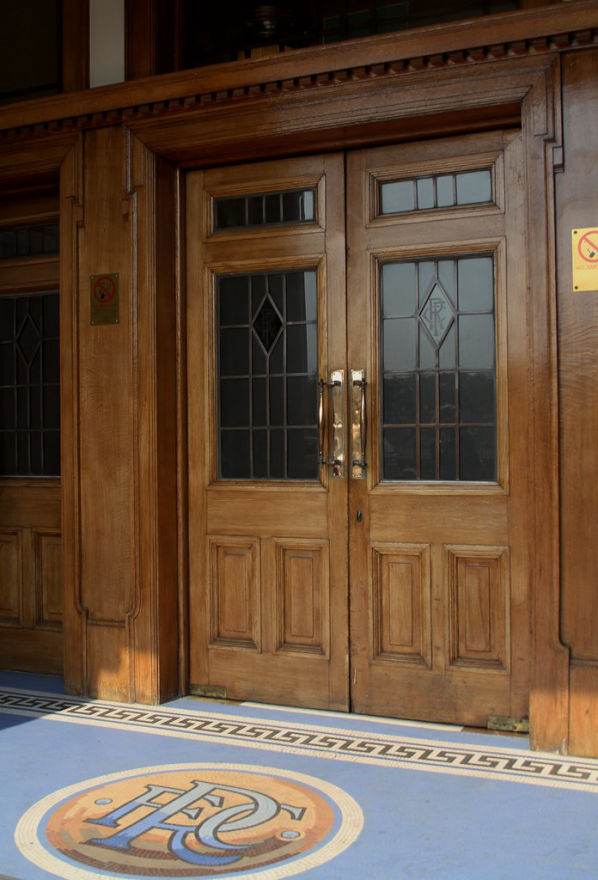
Through the main doors of the Main Stand is a wood-panelled hallway. A marble staircase leads to the boardroom and trophy room. Inglis compared Ibrox to Highbury, in that it combined corporate power with a sense of tradition and solidity. It was originally constructed as a 10,000-seat stand above a standing enclosure. It was redeveloped in the early 1990s with the addition of the Club Deck and seating in the enclosure. It is now a three-tier all-seated structure, accommodating approximately 21,000 spectators. The front wall of the middle tier is one of the last surviving examples of the Leitch style of criss-cross detailing. The middle tier is split into front and rear sections, while the enclosure is split into east and west sections, either side of the retractable tunnel cover.
Opposite the Bill Struth Main Stand is the Sandy Jardine Stand formerly known as the Govan Stand. It is a two-tier stand, similar in style to the two end stands, which was completed in 1981. To the rear of the Govan Stand is the Argyle House extension, completed in 1990, which provides executive boxes, hospitality areas and office space. The Bar 72 area was added to the rear section of the Govan Stand in 2006. The Copland Road Stand, at the east end of the stadium, was completed in 1979 and now accommodates just over 8,000 fans. It is traditionally the 'Rangers end' of the ground and the team normally chooses to attack that end in the second half of matches. The western Broomloan Road Stand, which was completed in 1980, is identical to the opposite end. Although constructed as separate structures, the three stands have been linked since the mid-1990s, when two additional areas of seating were added to the corner areas. All of the stands are designed using the 'goalpost' structure, in which a large portal frame supports perpendicular beams on which roof cladding is secured. A Rangers Megastore is located in the corner between the Copland Road and Govan Stands.
Ibrox has been home venue for the Scotland national football team 21 times. The ground most recently hosted a Scotland game in October 2014 (a UEFA Euro 2016 qualifier against Georgia, won 1–0) when Hampden Park was unavailable due to its temporary conversion to hold athletics in the 2014 Commonwealth Games.
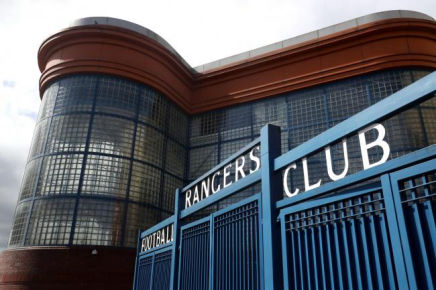
Ibrox hosted several internationals during the 1990s, particularly when Hampden was being redeveloped. Hampden was redeveloped in two phases. Ibrox hosted four Scotland games in the first phase, starting with a 1994 World Cup qualifier against Portugal in October 1992. It was not a happy interlude for Scotland fans, however, as the team failed to qualify for the World Cup for the first time since 1970. Although the attendances at Ibrox were higher than at Hampden, some fans resented the fact that they were helping the finances of Rangers. Fans also complained that the ticket prices were too high. During the second period of redevelopment, however, Scotland won an important 1998 World Cup qualifier against Sweden at Ibrox.
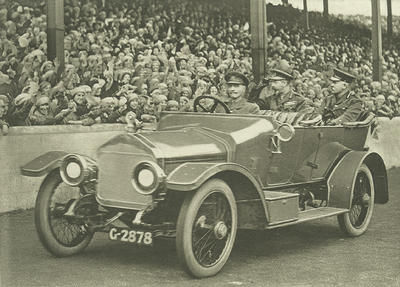
King George V & Queen Mary visited Ibrox Park on 17 September 1917, to thank Glasgow and Clydeside for its efforts in the First World War. In the first ever public investiture in Scotland, and in front of 100,000, the King awarded medals to servicemen including three Victoria Crosses, 46 Military Medals and 33 Military Crosses.
For the 1938 Empire Exhibition being held in Bellahouston Park and which attracted over 13 million visitors, his son King George VI suggested the official opening ceremony be held in Ibrox Park, allowing 146,000 spectators to see the opening. His speech was broadcast live to the nation and throughout the Empire on the morning of 3 May 1938. This was used as source material by Colin Firth for his performance in The King's Speech movie. Ibrox has been used for athletics competitions, Empire Games, and concerts, including performances by Simple Minds (1986), Frank Sinatra (1990), Rod Stewart (1995), Elton John and Billy Joel (1998).
In 1980, Ibrox hosted a world championship boxing match between Jim Watt and Howard Davis. Ibrox hosted the rugby sevens event at the 2014 Commonwealth Games, won by South Africa. There was a total attendance of 171,000 for the four sessions of play, which set a new record for a rugby sevens tournament.